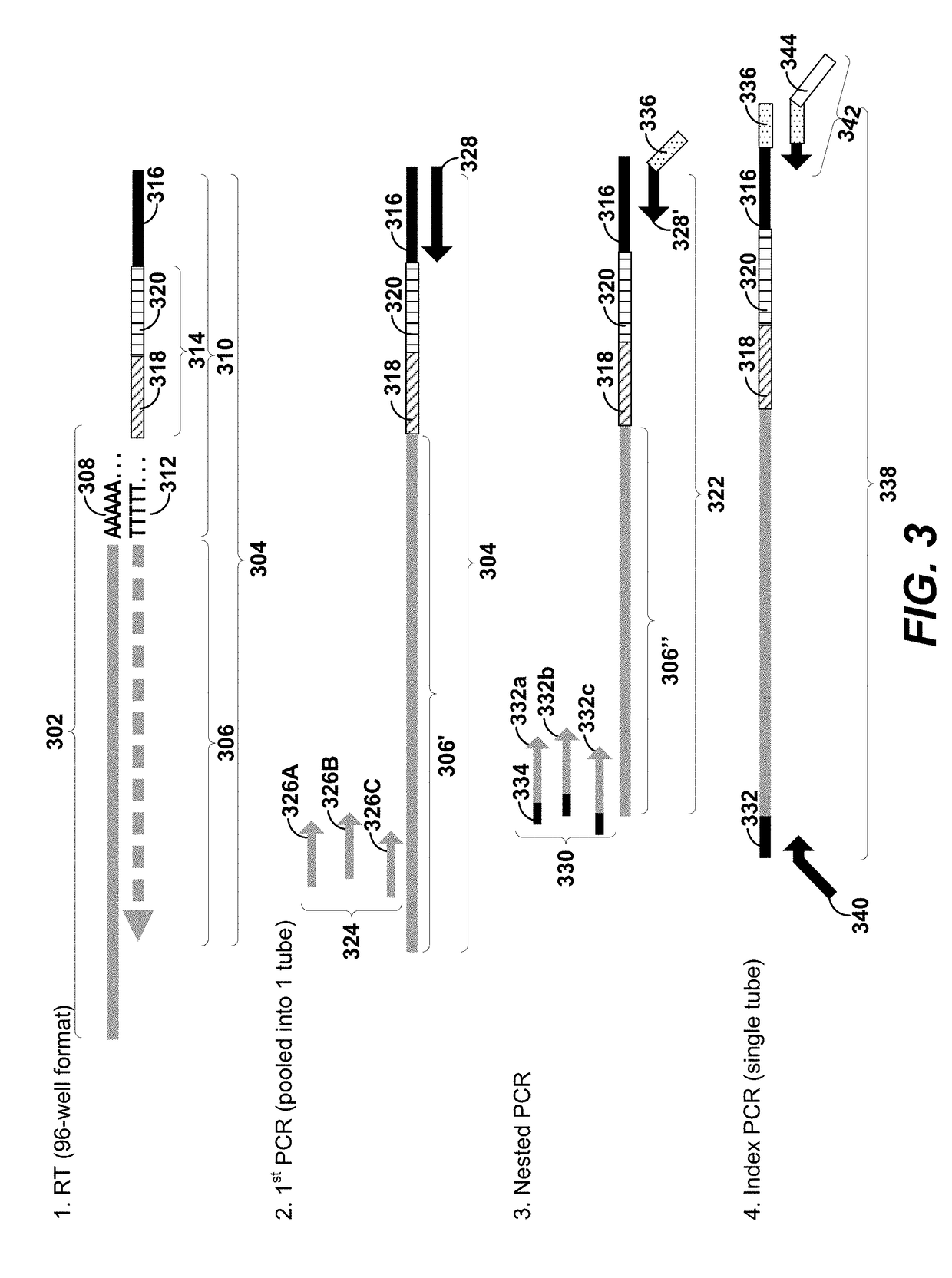Methods for expression profile classification
a technology of expression profile and classification method, applied in the field of classification of expression profile, can solve the problem of large amount of data generated by these methods
- Summary
- Abstract
- Description
- Claims
- Application Information
AI Technical Summary
Benefits of technology
Problems solved by technology
Method used
Image
Examples
example 1
Clustering by Recursive Dendrogram Splitting and Testing Followed by Merging
[0300]This example describes a clustering method by recursive splitting (e.g., recursive dendrogram splitting) and testing followed by merging.
Notes
[0301]In the method illustrated in this example, during the dendrogram splitting step, splits are (e.g., by default) deemed biologically relevant if the algorithm can find at least one gene that achieved a low-enough p-value (or a high enough −log 10(p-value)). In other words, the only hyperparameter to be tuned is the score threshold parameter in some embodiments. A higher score threshold (e.g. 100) corresponds to a lower p-value (10e-100), which means that a more significant gene must be found in order for the split to be deemed valid. Higher score thresholds result in a smaller number of clusters.
[0302]If too many clusters are generated after the split step, then a user can try increasing the score threshold. If too few clusters are generated split step, then ...
example 2
Visualizing the Results of Clustering by Recursive Dendrogram Splitting and Testing Followed by Merging
[0366]This example describes visualizing the results of clustering by recursive dendrogram splitting and testing followed by merging illustrated in Example 1.
[0367]The cluster labels generated after the splitting and merging steps were examined.
[0368]In [6]: plt.scatter(x1,x2,edgecolors=‘none’)
_=plt.axis(‘off’)
plt.title(‘Pre-clustering’)
# Clustering results using pre-merged labels (label singletons)
plt.figure( )
split.plot_labels_legend(x1,x2,split.str_labels_to_ints(ys))
plt.title(‘After splitting step’)
# Clustering results using post-merged labels
plt.figure( )
split.plot_labels_legend(x1,x2,ym)
plt.title(‘After merging step’)
# Clustering results using post-merged labels
plt.figure( )
split.plot_labels_legend(x1,x2,ym_community)
plt.title(‘After merging step using community detection’)
Out[6]:
[0369]FIGS. 8A-8D show non-limiting exemplary plots of expression profiles in a two dimensional ...
example 3
Parameter Sweeping for Clustering by Recursive Dendrogram Splitting and Testing Followed by Merging
[0397]This example describes parameter sweeping for optimizing parameters for recursive splitting and testing followed by merging.
[0398]During the splitting step of the method, two hyperparameters can be tuned: score threshold and disband percentile. What different clusters can be generated with different hyperparameters can be explored. Several (post-split pre-merge) clustering results can be obtained rapidly by exploiting the fact that the clusters generated with a smaller score threshold (smaller threshold results in more clusters) partition the clusters generated with a larger score threshold. First, run the splitting step with a very low threshold. Second, use the get clusters from history( ) function.
[0399]An example for sweeping through various score threshold values is shown below. The same can be done with disband percentile values.
[0400]In [16]: ys,shistory=split.dendrosplit(...
PUM
 Login to View More
Login to View More Abstract
Description
Claims
Application Information
 Login to View More
Login to View More - R&D
- Intellectual Property
- Life Sciences
- Materials
- Tech Scout
- Unparalleled Data Quality
- Higher Quality Content
- 60% Fewer Hallucinations
Browse by: Latest US Patents, China's latest patents, Technical Efficacy Thesaurus, Application Domain, Technology Topic, Popular Technical Reports.
© 2025 PatSnap. All rights reserved.Legal|Privacy policy|Modern Slavery Act Transparency Statement|Sitemap|About US| Contact US: help@patsnap.com



